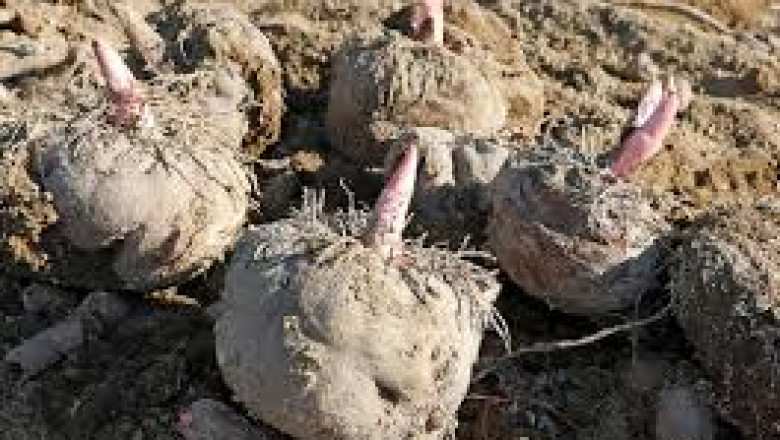views
The Konjac Market continues to gain momentum in the Asia-Pacific region, where leading companies are driving performance through innovation, expansion, and evolving consumer alignment.
Asia-Pacific as the Powerhouse of the Global Konjac Industry
Asia-Pacific is not only the traditional home of konjac but also its largest and most active market. Countries like China, Japan, South Korea, and Indonesia have long histories of konjac cultivation and consumption. In 2025, this region contributes the highest volume of both production and consumption, with China alone accounting for over 50% of the global supply.
This leadership is driven by a combination of cultural familiarity, favorable agro-climatic conditions, and rising domestic demand. But beyond raw production, key players in the region are adopting advanced strategies to secure market dominance.
Leading Companies and Their Market Positions
Several major players have emerged as dominant forces in the Asia-Pacific konjac market. These include:
-
Hubei Yizhi Konjac Biotechnology Co., Ltd (China): A vertically integrated company known for its large-scale farming, R&D capabilities, and value-added product lines, such as konjac flour and dietary fiber supplements.
-
The Konjac Sponge Company (Japan): While focusing more on skincare applications, it plays a niche yet important role in wellness-driven innovation.
-
Shimizu Chemical Corporation (Japan): A legacy company with decades of experience in konjac food products, known for its innovations in food-grade processing.
-
Henan Xin Industry (China): A fast-growing manufacturer with a strong export focus, especially to Europe and North America, providing private-label konjac noodles and capsules.
These companies have been successful due to strategic expansions, investment in R&D, and partnerships with health food brands worldwide.
Innovation-Led Growth and Product Diversification
Key players are investing significantly in R&D to develop innovative product formats that align with modern lifestyles. These include:
-
Low-carb konjac pasta tailored to ketogenic diets.
-
Soluble konjac powders designed for nutraceuticals.
-
Blended health drinks incorporating konjac fiber and traditional herbs.
Japan and South Korea lead in integrating konjac with other wellness trends such as gut health, beauty-from-within, and clean eating. Players are also exploring uses in biodegradable packaging and pharmaceutical-grade applications, further expanding the market scope.
Companies are setting up innovation centers and laboratories to test taste, texture, and functional benefits, allowing for rapid product rollouts tailored to specific consumer demands.
Export Performance and Global Reach
Asia-Pacific producers have not confined their operations to domestic markets. In 2025, the export performance of top konjac companies continues to rise, especially to North America, Europe, and the Middle East. Customized product development and private-label manufacturing have been crucial for entering international retail chains and health stores.
Chinese and Japanese manufacturers often lead in terms of competitive pricing, while South Korean companies capitalize on design and quality packaging. This strategic differentiation has enabled Asia-Pacific companies to capture market share in diverse economic and regulatory environments.
Technological Advancements in Processing and Supply Chain
Efficiency and quality are core to the growth strategies of Asia-Pacific players. Automation in konjac peeling, drying, and milling has improved output consistency and reduced labor costs. Furthermore, blockchain and ERP tools are being adopted to enhance traceability, which is increasingly important for gaining access to premium export markets.
These companies are also introducing cold-chain logistics and eco-friendly packaging innovations to ensure shelf life and product integrity, especially in high-humidity export destinations.
Regulatory Compliance and Standardization
Asia-Pacific’s key players are proactive in adhering to international food safety and health standards, including certifications such as:
-
ISO 22000 (Food Safety Management)
-
HACCP (Hazard Analysis and Critical Control Points)
-
EU Organic and USDA Organic labels
This emphasis on quality has helped players build credibility with international buyers and health-conscious consumers. Government support in the form of subsidies and export incentives further strengthens the region’s competitiveness.
Market Challenges and Mitigation Strategies
Despite growth, companies in Asia-Pacific face challenges such as raw material price fluctuations, seasonal disruptions in konjac harvests, and tightening regulations around health claims.
To mitigate these risks, top players are:
-
Diversifying supplier bases to ensure year-round raw material availability.
-
Investing in controlled-environment agriculture for predictable output.
-
Building alliances with universities and biotech firms for data-backed health claims.
These forward-thinking strategies are ensuring long-term stability in an otherwise volatile global food ecosystem.
Future Outlook: Expansion and Collaboration
Looking ahead, key players in the Asia-Pacific konjac market are expected to expand their global footprint through joint ventures and licensing agreements. Some are entering the functional beverage and plant-based meat markets, leveraging konjac’s unique properties.
Brands are also planning retail expansion into Africa and Latin America, where awareness of konjac is growing, and wellness trends are catching up rapidly.






















Comments
0 comment